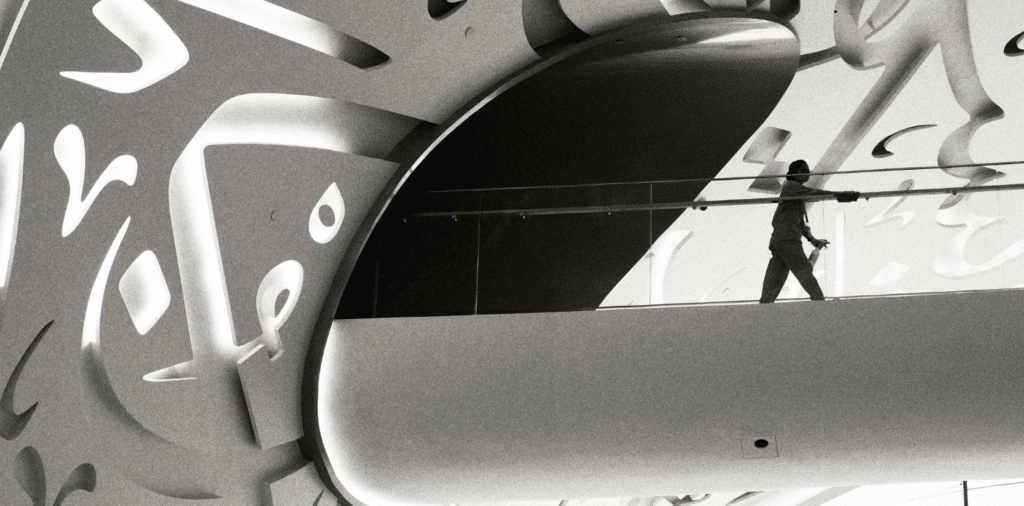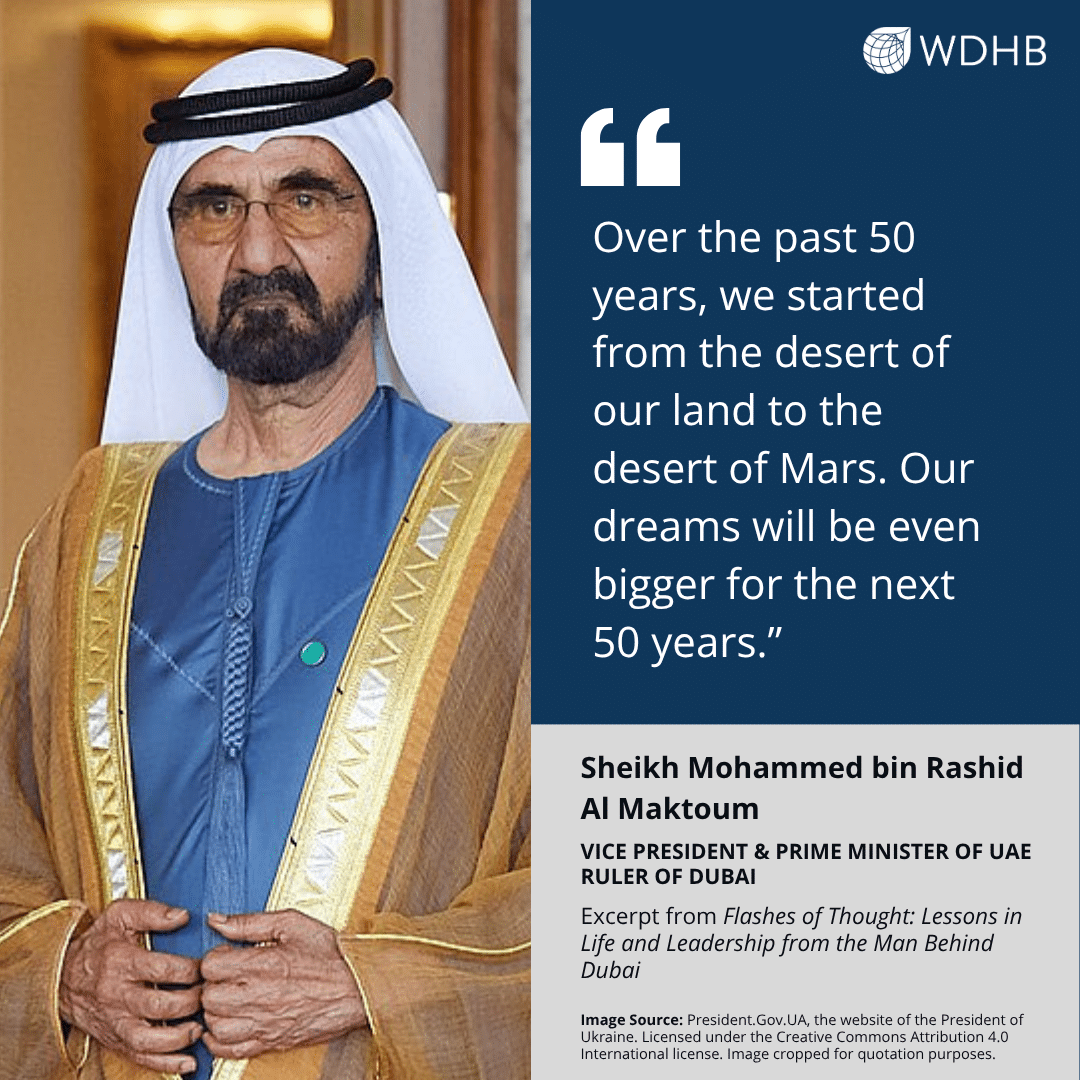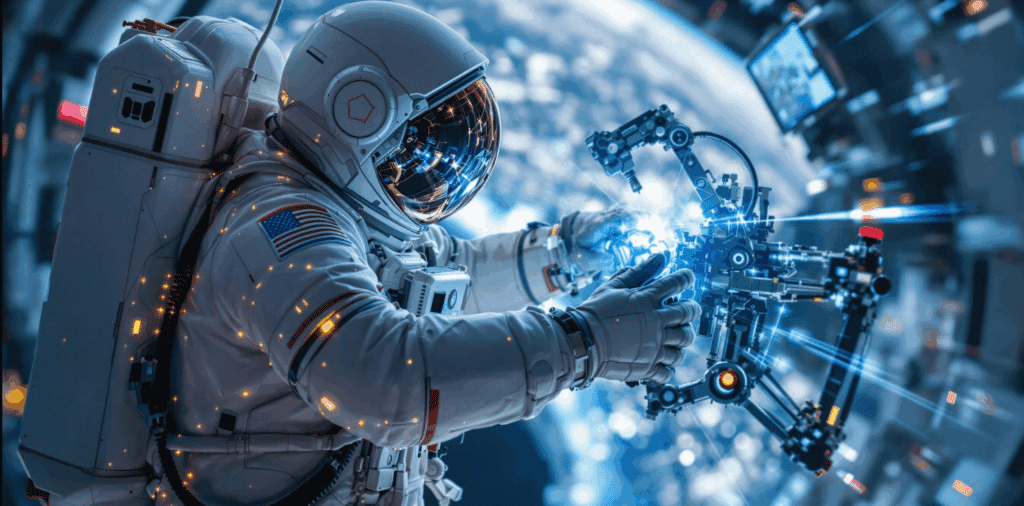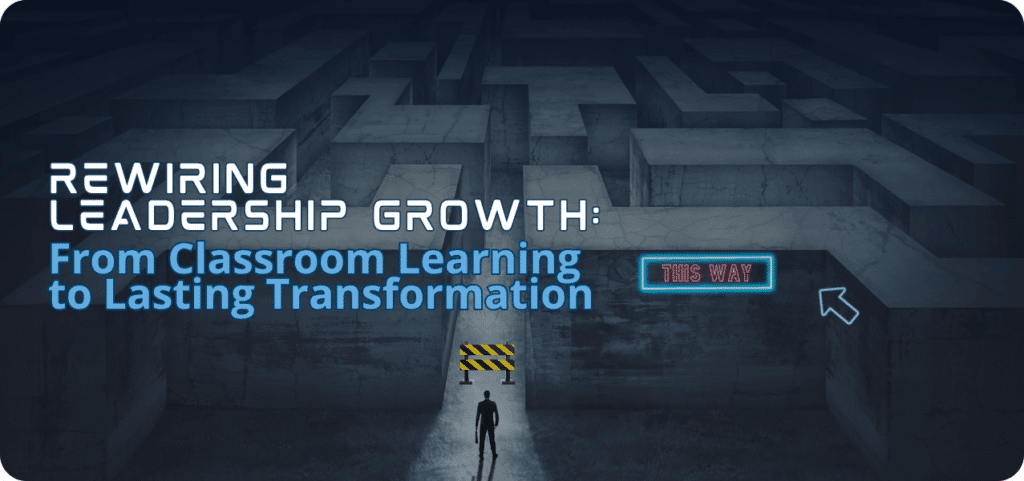Why Transformation Demands More Than Change Management: A Study of Dubai’s Transformation

SUMMARY: What is the difference between change management and transformation? And how does this distinction help leaders who are managing change and disruption? Using Dubai as a case study, we dive into what it means to be proactive and reveal how leaders can practice bold decision-making beyond operational shifts.
Introduction
The business world is filled with talk of transformation, yet starving for true success stories. Organisations declare themselves to be “transforming,” but often rely on simple project management tactics: updating technology, process reengineering, restructuring a team, role evolutions or cost-cutting. These tools may address the symptoms of stasis and increase productivity, but they do not confront the deeper questions that offer long-term success and sustainability, like future relevance and reinvention.
To understand what true transformation entails, we can look to one of the most dramatic examples in recent history: the Emirate of Dubai. From a small port town in the 1960s to today’s global metropolis and innovation hub, Dubai’s journey reveals how transformation differs fundamentally from change. Where change management fine-tunes the existing system, transformation reimagines the system itself.
By tracing Dubai’s trajectory from bold infrastructure bets to future-oriented governance, we uncover vital lessons for leaders seeking to not just manage the present, but to invent a resilient, ambitious future.
Looking Back: The Role of Visionary Leadership in Dubai’s Transformation
It is not every day you hear a Catholic pope quoted in the Emirate of Dubai. But during a recent Learning Expedition in the Gulf, a local professor invoked the late Bishop of Rome, Pope Francis, who once said, “We are not living an era of change, but a change of era.”
Transformation is not made of minor course corrections. Rather, it emerges when bold vision meets decisive action. Dubai’s evolution over the past 50 years exemplifies this dynamic. Its leaders did not merely adapt to circumstances—they actively reshaped them.
Infrastructure as a Catalyst
In the 1960s, oil changed the game, as it did for many Gulf countries. While Dubai did not have anywhere near the oil reserves of its neighboring city, Abu Dhabi, Sheikh Rashid bin Saeed Al Maktoum saw a future for Dubai that would endure long after its reserves had dried up. With a long-term view of economic vitality, he invested heavily in infrastructure, determined to shape the city into a trade and transport nexus. These projects included the city’s first airport and the dredging of Dubai Creek. While these strategic bets on Dubai’s potential did not offer immediate returns, they redefined what was possible for the city.
Strategic Diversification
The 1980s brought an influx of capital following the creation of the Jebel Ali Free Zone (Jafza) in 1985. Jafza was the Middle East's first major "free zone," an area for foreign business to operate with almost zero taxes and without need for a local partner. The intention was to draw foreign business to the area, further establishing Dubai as a logistics hub. What started out with 11 businesses quickly grew to over 11,000, and Jafza later became the model for free zones internationally. This foresight and innovation from Dubai's leadership laid the groundwork for a more diversified and resilient economy.
Iconic Projects and Global Branding
The 1980s and beyond saw the emergence of signature projects that placed Dubai on the world stage. The founding of Emirates Airlines (1985) and its unique business model have resulted in its rise to one of the most profitable and competitive global airlines in the world. While many believe that the airline’s success is attributed to preferential treatment by the government, in reality, there is no evidence that suggests Emirates Airlines received such treatment, with government funding sitting around $5 billion since the company’s founding. The construction of the Dubai World Trade Centre (1979), the sail-shaped Burj Al Arab (1999), and the record-breaking Burj Khalifa (2010) were all architectural feats and bold statements of identity. These projects signaled to the world that Dubai did not want to follow trends, but set them.
Visionary Leadership
At the heart of this transformation were leaders like Sheikh Maktoum and his brother, Sheikh Mohammed bin Rashid Al Maktoum—his eventual successor. Both leaders consistently pursued audacious goals, as Sheikh Mohammed famously said: “Over the past 50 years, we started from the desert of our land to the desert of Mars. Our dreams will be even bigger for the next 50 years.”
Their leadership was defined not only by vision, but by their ability to mobilise cross-sector collaboration, take calculated risks and cultivate global partnerships.

Cultural Traits Behind the Transformation
Several core behaviours and beliefs enabled this transformation:
- A belief in bold ideas and the power of rapid execution.
- An openness to global expertise, talent and investment.
- A culture of pragmatism and resilience, where failure is not fatal, but formative.
- A readiness to destroy the old system to ensure shadow systems cannot undermine the new.
- Successful transformation requires consistency, which stems from discipline and dedicated rituals.
- Dubai is an example of using scarcity to amplify natural strengths and assets (in Dubai’s case, entrepreneurialism). The Emirate now knows that taking big bets requires ample resources—otherwise, change succumbs to resistance.
These traits created a foundation for transformation, welcoming the opportunities that complexity offers and ambitiously shaping the future.
Creating the Conditions for Transformation
While early infrastructure laid the groundwork, Dubai’s modern transformation is distinguished by the systems it has built to sustain momentum and turn vision into reality.
Coalitions Across Sectors
Dubai’s most significant transformation efforts have succeeded not because of isolated effort, but because of broad-based coalitions. Expo 2020, as one example, intentionally brought together 24.1 million people from 178 countries as a meeting of minds and a showcase for cutting-edge technologies, business opportunities and sustainability. The project boosted Dubai’s economy as well as its public image as a hub for global and future-focused innovation.
Government, business and civil society are united through public-private partnerships and cross-sector collaborations. These coalitions ensure that transformation goes beyond government mandates and becomes a shared public endeavour.
Department of Economy and Tourism: A Bridge for Business
The Department of Economy and Tourism exemplifies Dubai’s integrative approach. By streamlining regulation, promoting global investment and building innovation ecosystems, it acts as both steward and catalyst. The department ensures alignment between policy and enterprise, creating an enabling environment where businesses can scale and experiment for transformation.
Balancing Ambition and Execution
Dubai is distinguished by its ability to pair long-term vision with rapid, iterative execution. Through agile governance models and clear lines of accountability, large-scale ambitions are broken into testable pilots, refined through learning and scaled upon success. Strategic plans, such as the Dubai Strategic Plan 2015, put both transparency and strategy at the center, creating frameworks through which the people of Dubai work together with intentional, disciplined action.
Inspiring Collective Ownership
Perhaps most importantly, Dubai’s leaders have cultivated a shared sense of ownership among residents and businesses. Visionary storytelling, milestone celebrations and public engagement efforts help make transformation a collective aspiration rather than a top-down directive. Every person in Dubai is an active participant in shaping the city’s progress.
Future: Foresight, Resilience and Adaptive Systems
As global uncertainty grows, so too does the need for systems that can adapt and seize emerging opportunities. Dubai has recognised this imperative, positioning itself not just as a place of ambition, but of foresight and resilience.
Foresight to Action
Dubai’s investments in foresight are not abstract. Institutions such as the Dubai Future Foundation, the Mohammed Bin Rashid Space Center and the first Virtual Assets Regulatory Authority—an early response to cryptocurrency—actively explore and incubate future-facing sectors, from artificial intelligence to sustainable infrastructure to space exploration. Scenario planning, innovation labs and global partnerships ensure that strategic thinking is matched by experimentation and execution.
Long-Term Planning with Adaptive Capacity
Dubai’s economic and urban strategies are built for constant adaptation, as stability is rare in the region and therefore not the desired outcome. Guided by long-term visions, such as the Dubai 2040 Urban Master Plan, Dubai’s urban planners anticipate not only growth, but disruption (for example, climate risk, technological upheaval and geopolitical shifts). Policy is designed intentionally to allow flexibility in responses. The city’s embrace of digital transformation and smart-city technologies further enhances its capacity to respond to a rapidly evolving global context.
Building for Resilience
Resilience is not left to chance. Whether through regulatory agility, infrastructure redundancy or continuous learning loops, Dubai builds systems that are designed to adapt. This mindset of welcoming change, rather than resisting it, is a hallmark of true transformation.
Lessons for Transformation Leaders
The fundamental distinction between change management and transformation is this: change management repairs the past, while transformation invents the future. Dubai is less concerned with continuous improvement; they readily pivot to the most relevant and lucrative industries whenever the need for reinvention arises. Leaders who aim to transform must cultivate a similar mindset to question inherited assumptions, explore new models and mobilise ecosystems around a compelling new vision.
Conclusion: Transformation as a Leadership Discipline
Dubai’s story of rapid economic development offers meaningful insight into transformation as a leadership discipline. The city’s success is not the product of luck or linear planning, but of courageous vision, strategic coalition-building and designing systems for continuous renewal.
For corporate leaders, the implications are clear: transformation cannot be delegated to a change management office or confined to isolated initiatives. It must be woven into the fabric of leadership itself.
This means:
- Thinking in decades, not just quarters.
- Leading with vision, not just metrics.
- Designing for adaptability, not just efficiency.
- Building cultures where ambition, experimentation and ownership thrive.
In a world marked by volatility, ambiguity and accelerating change, the people who succeed will not be those who manage change best. Rather, it will be the leaders with courage, clarity, and commitment who will shape the future and reimagine what is possible. As Sheikh Mohammed reminds us:
”The future belongs to those who can imagine it, design it, and execute it. It isn’t something you await, but rather create.”
Further Reading:
https://www.saadatrent.com/english/article/dubai-before-after
https://hbr.org/2022/07/organizational-transformation-is-an-emotional-journey
Image Source:
This photo of Sheikh Mohammed bin Rashid Al Maktoum originates from the website of the President of Ukraine and is licensed under the Creative Commons Attribution 4.0 International license. This image was extracted from its original file, "Meeting of Volodymyr Zelensky and Mohammed bin Rashid Al Maktoum (15-02-2021)", which you can view here. Image cropped for quotation formatting.
Author
Subscribe to get Access to Exclusive Content





